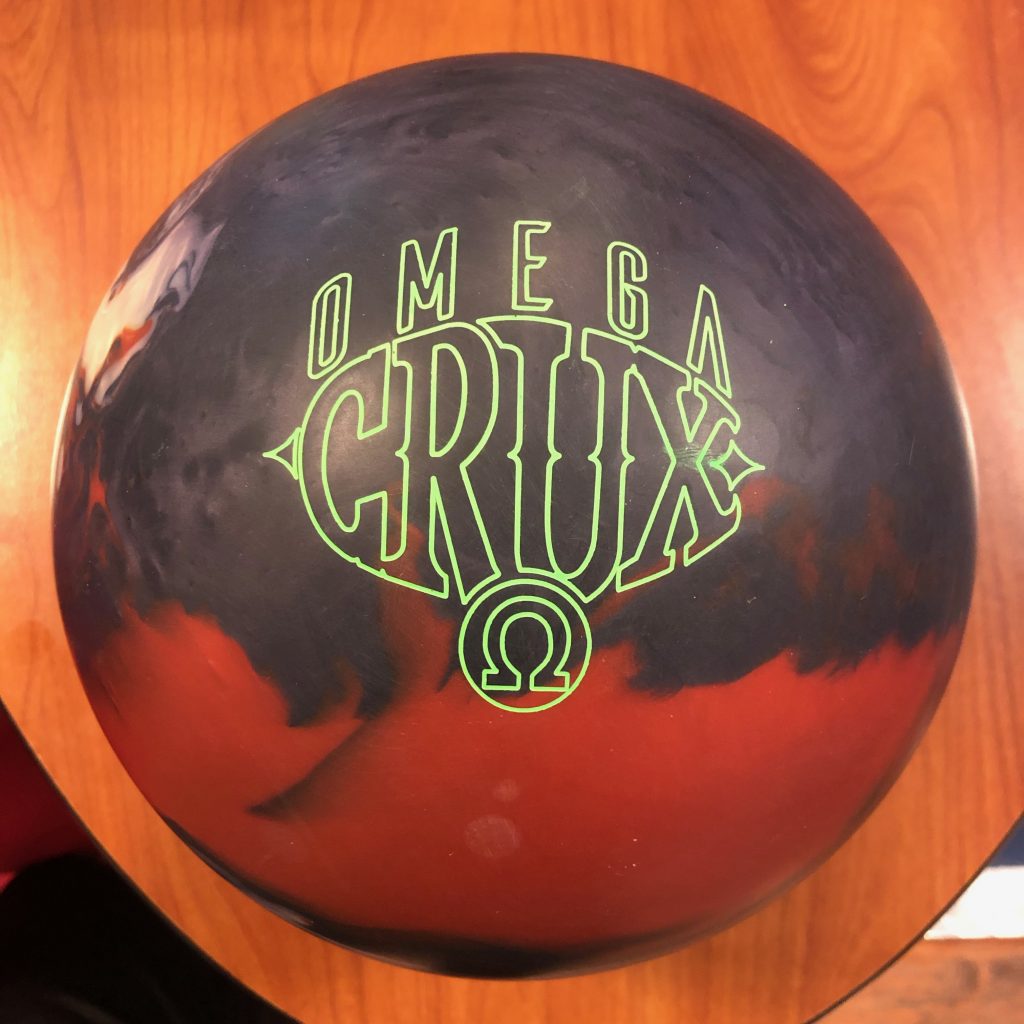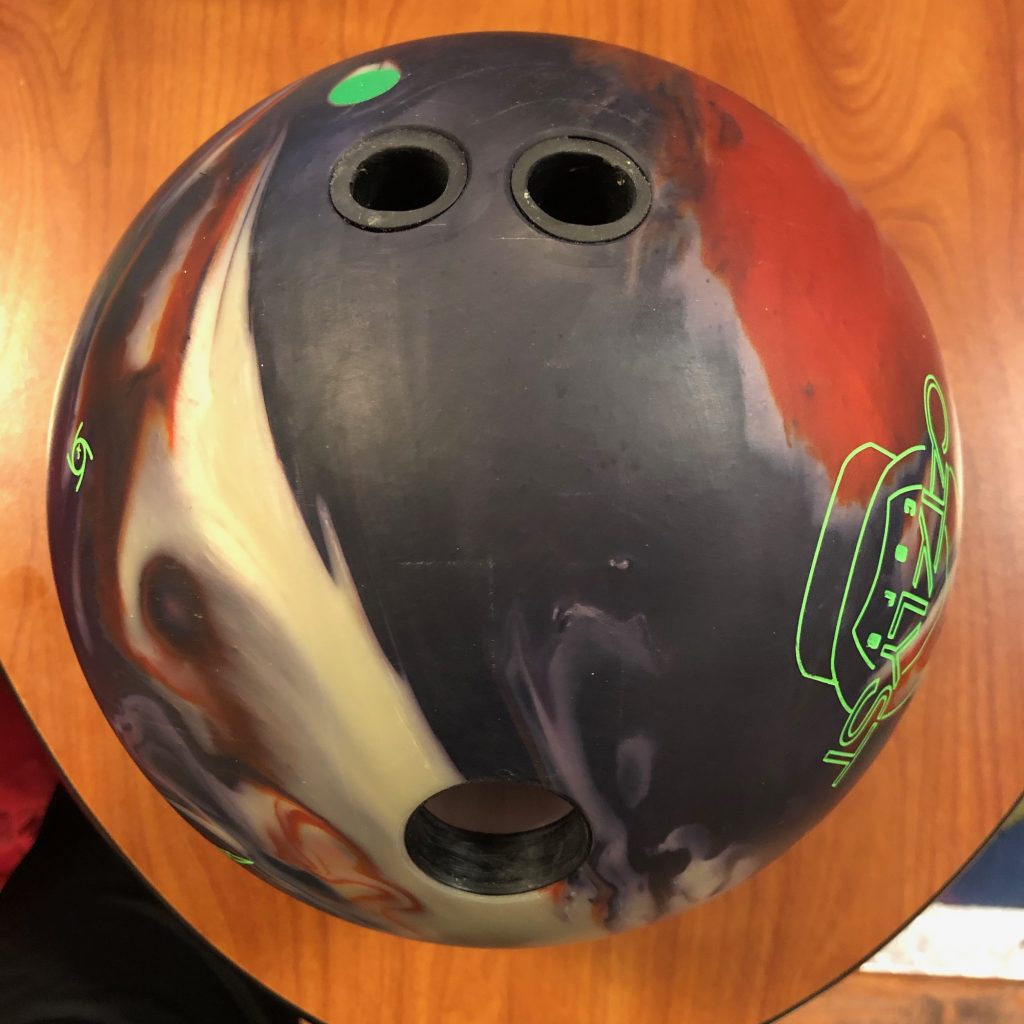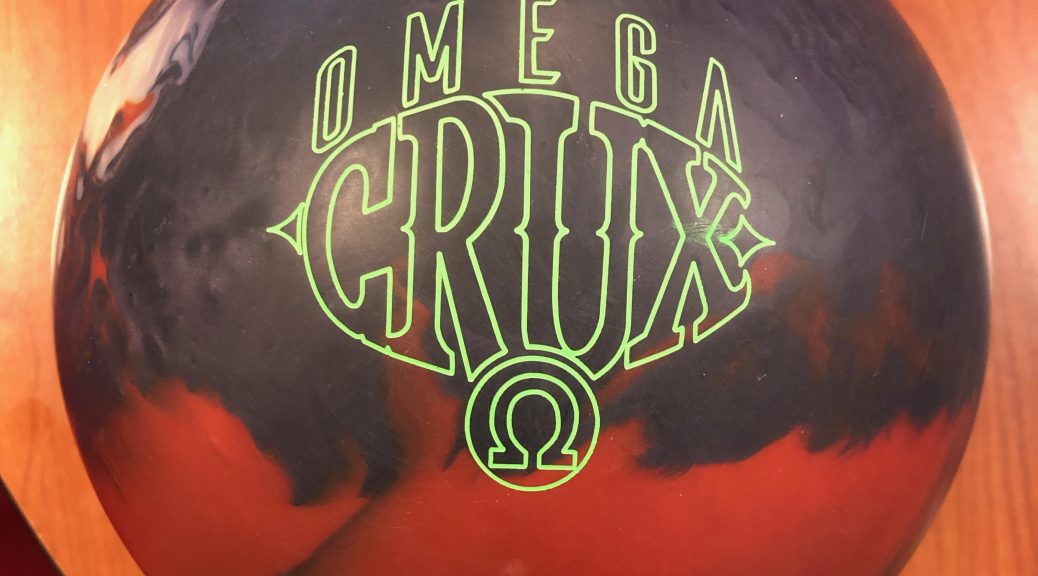

First Impressions
Wow this thing is dull out of box. The Omega Crux is the smooth, controlled Crux motion we’ve become familiar with. The grit makes sure it hooks up and goes, showing off some punch.

Let me introduce our new partner Haley’s Pro Shop. A big thank you to Jeff Miller and Ron Hoppe. Don’t forget to check out Haley’s Pro Shop for world class drilling and coaching!
Tamer Elbaga (Lefty)
Style: Tweener
RPM: 375 rpm
PAP: 5 & 3/8 up
Average Speed: 18.5 mph (at release)
Axis tilt: low
Axis rotation: medium/high
Test Equipment: 15 Pounds
Layout: 45 x 4.5 x 45
Bryan Hoffman (Righty)
Style: Higher Tilt Stroker
RPM: 280 rpm
PAP: 4 1/4 & 1/8 down
Average Speed: 17.5 mph (at release)
Axis tilt: high
Axis rotation: medium
Test Equipment: 15 Pounds
Layout: 65 x 5 x 50
Intent: Medium roll with a slow transition at the breakpoint
“Keep in mind that coverstock accounts for 70% of ball reaction, but the core creates the dynamic shape of the reaction. Your driller will alter the shape to suit your game.”
Pattern
THS: 40ft, 23ml
Sport: 2019 PBA Don Johnson 40ft, 30.7 ml, 2.4:1 ratio
Specs
The Storm Omega Crux uses the Catalyst Asymmetric core inside the GI-20 pearl coverstock.
15 pound = RG of 2.50, diff of .052, mb of .017
14 pound = RG of 2.54, diff of .050, mb of .015
Coverstock finish: 3000 grit abralon
Overall
We’ve previewed the ball so we’ll jump past the specs and get right into the ball motion of the Omega Crux. This sure looks like plenty of surface out of box. It’s definitely going to read the lane but you won’t necessary feel like it’s hooking at your feet. That’s a balance I actually like and while many people don’t seem to do this often, I frequently do put surface on pearls to get the earlier smoother read the surface offers while taking advantage of the backend of a pearl. The point is polishing a solid doesn’t make it a pearl and dulling a pearl doesn’t quite turn it into a solid from a ball reaction standpoint.
The swirly colors allow you to see the core transition and you can see and feel that grittiness and core chug and lope as it transitions. The shape of the Catalyst core on lane is smooth and forward while still feeling like it has backend. For me, the Halo Pearl was even more forward off the end of the pattern. The Omega is not an exception to the Crux line motion. It actually reminds me of balls like the Lock and Critical Theory. But I would say the Omega is more forward than the Lock line. They are similar right up until the ball gets into the roll phase. At that stage, the Rad-X core in the Lock is generating more angle. I compare it here to the Snap Lock to give you an idea of what I’m referring to. The bottom line is that there’s a good margin where you can play this ball through the fronts but there also a clear limit because eventually that forward motion will give up angle downlane if you get too deep. How much is relative to the bowler. Ultimately this is a bigger piece than needed on the house shot but I had no problem using it on fresh.
For Bryan, there are no major surprises relative to what I saw. It’s smooth and relatively early for a pearl asym, again attributable to the amount of OOB surface. Ultimately he is playing pretty direct and that is in the wheelhouse for both his game and the Omega Crux. He generally saw the ball hook up at the right time to give him good continuation and good carry. We’ve talked before how much he loves his Locks…yes he has two. I wondered if he would consider the Omega Crux as a replacement. I talked about the difference where the Lock is more angular. But actually it’s a characteristic he’s mentioned a couple of times makes the Lock tougher to use on sport shots like nationals. With the Omega being similar but a touch more forward, this could possibly be that replacement with a little more usability.
Final Thoughts
Ultimately, we found the Omega Crux to be a good offering. I like that it came with surface out of box. That gives you an idea of what it’s capable of. I only use the info of pearl, solid, or hybrid directionally. It’s not be all end all. This s a good case where you could theoretically use this ball at the top of your bag. It’s got plenty of grip and motion. I can see this working on sport shots as well because it is angular but the more forward motion gives it more control and predictability. For example, I find the Physix to have a great motion but it is a bit cleaner and more angular which makes it great for open shots and a little tougher on flatter shots.
Sport Shot
We tested on the 40ft 2019 PBA Don Johnson 30.7ml pattern so pretty high volume. My first instinct is this should work quite well in this scenario given the ball has some surface and has control but capable of generating angle. I was right. The Omega Crux is very easy to read. The ball motion is smooth overall with very predictable but definitive transitions. I could use 11 to 6 and that in theory could have been out of bounds but it climbed the hill. The better line is moving in to 14 out to about 9 and this gives me a little more room. This ball felt like something special on the sport shot. I had different plays to get to the pocket and the reliable motion is so fun. It doesn’t feel lazy and has a heavy roll but at the same time it’s less flippy then the Physix which makes it easier to use on tough stuff.
For Bryan it was a pretty simple reaction. Offers smooth control. It’s a nice shape and it can be tweaked with layout variations depending on what you are bowling on. He didn’t feel like he had miss room out but I think that was the characteristic of the pattern where he is playing.
Ultimately I feel like this ball has a great shot at making my sport shot bag. It’s going to be a toss up between this and the Physix but with this much factory surface, the Omega Crux could actually be above it.

